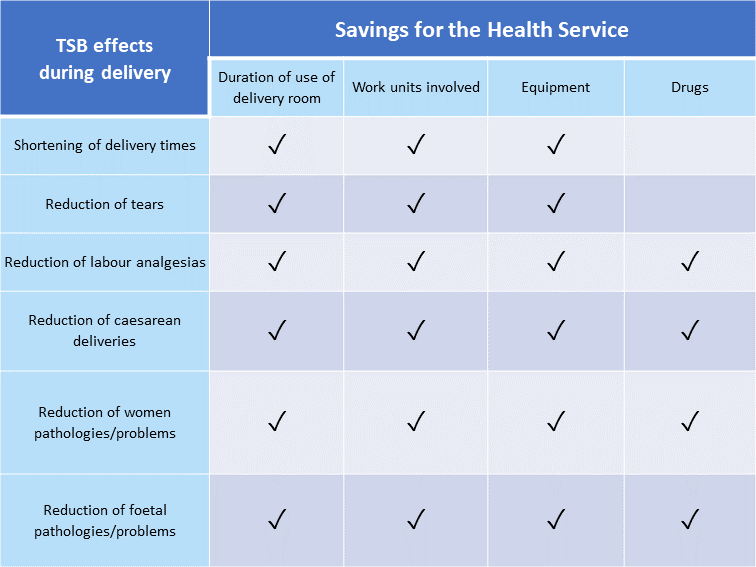The TSB training program has an excellent cost/benefit ratio for the healthcare system, since it allows for an improvement in physical performance during delivery and can guarantee a lower probability of pathological risks for the mother, the foetus and the newborn. This, in economic terms, translates into a significant reduction of costs for the healthcare system and for the women themselves.
The statistical analysis conducted shows that 92% of women in the TSB experimental sample have solved the problem of back pain during the course, especially pain in the lumbosacral region (80,2%) and dorsal region (34,9%), as well as ischialgias (22,6%) and osteitis pubis (15,1%).
Moreover, the analysis shows how women manage to train also autonomously outside the lessons. 99% of women can repeat the exercises at home, not only to maintain the well-being obtained during the course (53,9%) or to increase it (29,6%), but also to eliminate unexpected pains (30%).
Therefore, there is no need for the women who have attended the TSB training program to make use of painkiller drugs, special bodysuits or support bands.
If we look at the savings produced by the TSB method on the healthcare service during delivery, it is clear how shortening the times of delivery reduces the costs of the delivery room, of the operators involved and of the medical equipment. Moreover, shorter delivery times also reduce the probability to incur fetal problems. This factor, together with a clear reduction of second and third-degree tears for women, translates into further savings for healthcare facilities.
Thanks to the TSB method, which can reduce considerably the pain perceived by women in the delivery room, there is no need for any kind of labour analgesia anymore, with savings especially in terms of material and drugs used.
As demonstrated by the statistical analysis, the women who have attended the TSB training program and used the TSB method have shown a higher probability to incur a spontaneous cephalic version of the podalic foetus and consequently, have avoided caesarean deliveries. Moreover, the lower incidence of ‘cephalo-pelvic disproportion’, which can be solved with an appropriate and natural opening of the pelvis, further reduces the possibility of performing caesarean deliveries burdening the healthcare budget.
The table summarizes the savings for the healthcare system resulting from the use of the TSB method and from the consequent implementation of the TSB positions by women during delivery.

